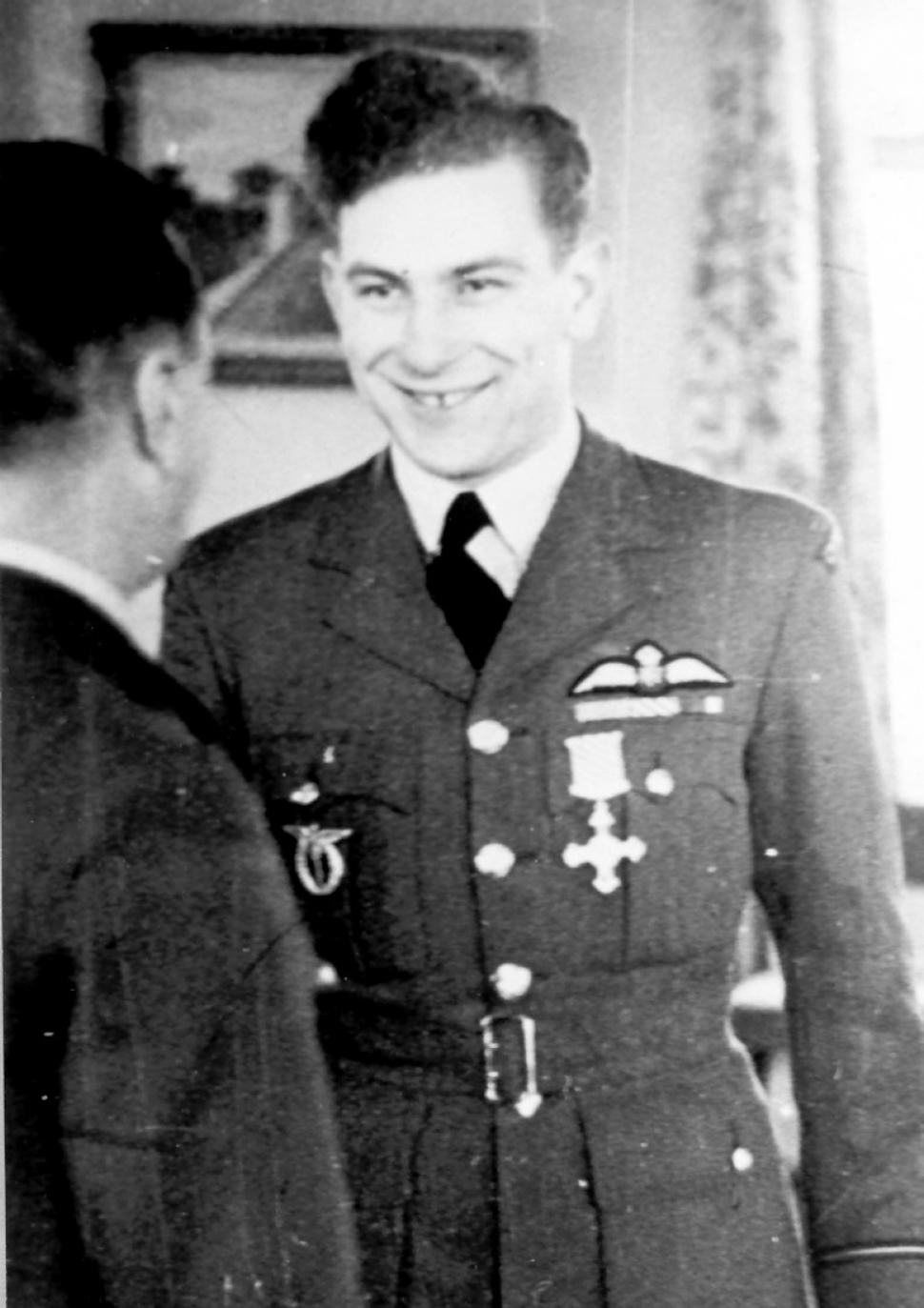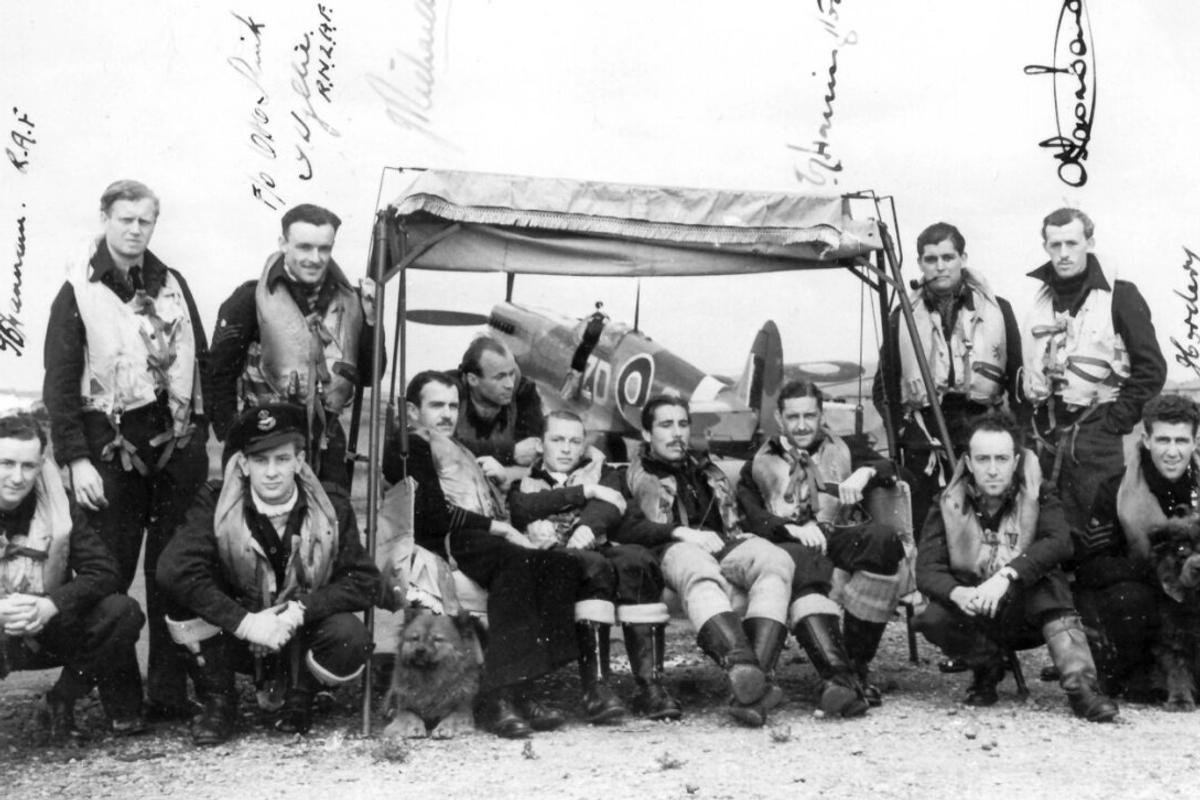Czechoslovak pilots patrolled the peaceful summer skies above Normandy for half an hour before receiving a warning via their headphones.
“Bandits six plus at ten o’clock!” a controller warned them on June 8, 1944.
The Spitfire fighter planes, which were operated by a group of three dozen Czechoslovaks, immediately intercepted and destroyed two Focke-Wulf Fw 190 fighter planes, piloted by Germans, and severely damaged several more. Flying Officer Otto Smik, a pilot who was then part of No. 310 Fighter Squadron of the Royal Air Force, hit one of the German fighters and watched its pilot bail out before firing more shots at the falling plane.
 Otto Smik after receiving a DFC award from Air Chief Marshall Sir Hugh William Lumsden Saunders at Hillingdon House in Uxbridge, UK, on January 1, 1944. (source: Spitfire nad Evropou by Jiří Rajlich)
Otto Smik after receiving a DFC award from Air Chief Marshall Sir Hugh William Lumsden Saunders at Hillingdon House in Uxbridge, UK, on January 1, 1944. (source: Spitfire nad Evropou by Jiří Rajlich)
“His ambition to get as many Germans as possible was extraordinary,” fellow pilot Jaroslav Hlaďo once said about Smik, describing him as a self-confident man who cared little about safety.
The German plane crashed and exploded near Lisieux, a French town that had been mostly destroyed, with hundreds of people killed, as a result of Allied bombardment immediately following the D-Day invasion of Normandy, in German-occupied northern France, two days before the Czechoslovak pilots fought the Germans in the area.
Smik, who loved planes from an early age, became one of the best Czechoslovak pilots serving in the Royal Air Force during the Second World War – and the best Slovak pilot.
“Otto was a very gifted and extremely aggressive fighter pilot,” Hlaďo added.
Smik was one of 250 Slovaks who joined Britain’s Royal Air Force (RAF) after 1939; nearly 40 Slovaks lost their lives on active service in the RAF.


 Otto Smik (kneeling, second from left) with other pilots from No. 222 "Natal" Fighter Squadron. (source: Spitfire nad Evropou by Jiří Rajlich)
Otto Smik (kneeling, second from left) with other pilots from No. 222 "Natal" Fighter Squadron. (source: Spitfire nad Evropou by Jiří Rajlich)